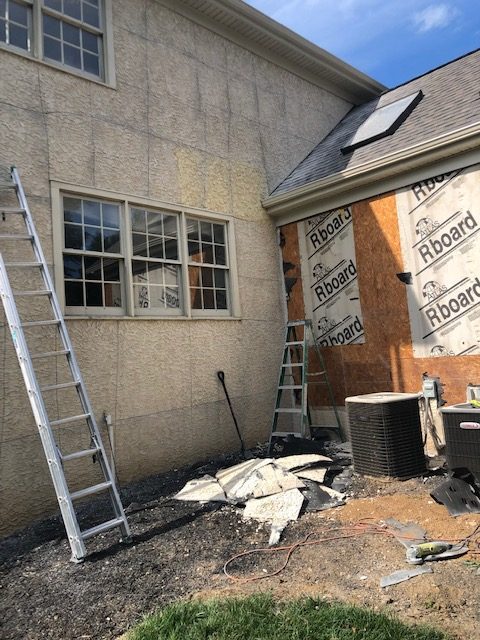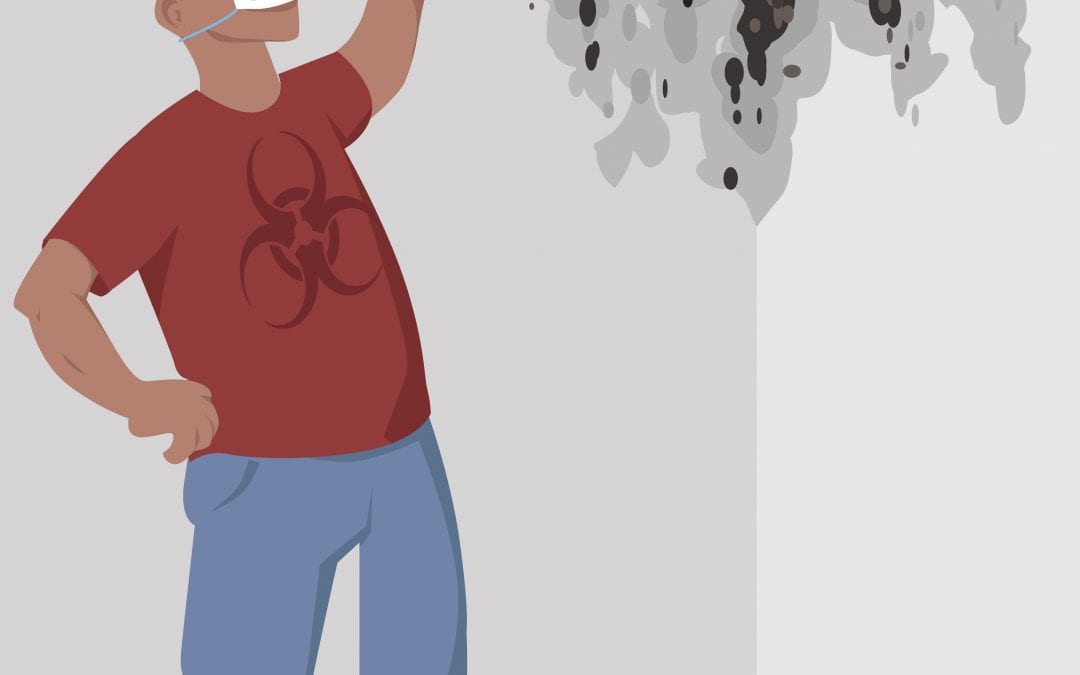Moisture Issues With Stucco Siding
Because stucco is such a porous material, it can easily absorb and retain water. This is the main reason why stucco siding is so prone to mold and is also the reason why many older homes in the Northeast routinely deal with stucco mold problems.
Stucco siding is made from three materials – lime, cement, and water. This siding is applied in several layers on top of a base made of lath. As a result, the exterior of a house has the appearance of being seamless and strong.
Unfortunately, if the stucco is not applied to the home correctly, moisture intrusion can occur and can cause water retention. Once the water begins to settle in the siding and the walls behind the stucco siding, the perfect breeding ground will be in place for the growth of mold. Mold is not just a discolored stain, it can also pose significant health risks for the occupants of the house.
Stucco And Mold – A Bad Combination

Stucco Mold on Wood Panels
Mold damage is one of the most common types of stucco damage. Many homeowners attribute faulty construction for the issues that they deal with regarding stucco siding.
This type of mold damage occurs when moisture is able to seep in and remain trapped behind the stucco. Many house inspectors are able to spot obvious signs of mold growth when it comes to stucco such as wood rot. By peeling away the stucco, rotting wood and mold are typically the first signs that an inspector will see. They are also the only signs that an inspector needs to see to know that the house has a major mold problem.
Preventing Mold Growth
If your home has stucco siding, you have two options you can choose from to avoid and prevent mold problems. You can either choose to keep your house well-maintained and have your home inspected every few years, or you can replace the stucco siding with another material.
When inspecting your home for stucco mold problems, look for the tell-tale signs that moisture has entered your home. Look for peeling paint, warped wood, condensation, and discoloration. These are all signs that your house could have a major mold problem.

